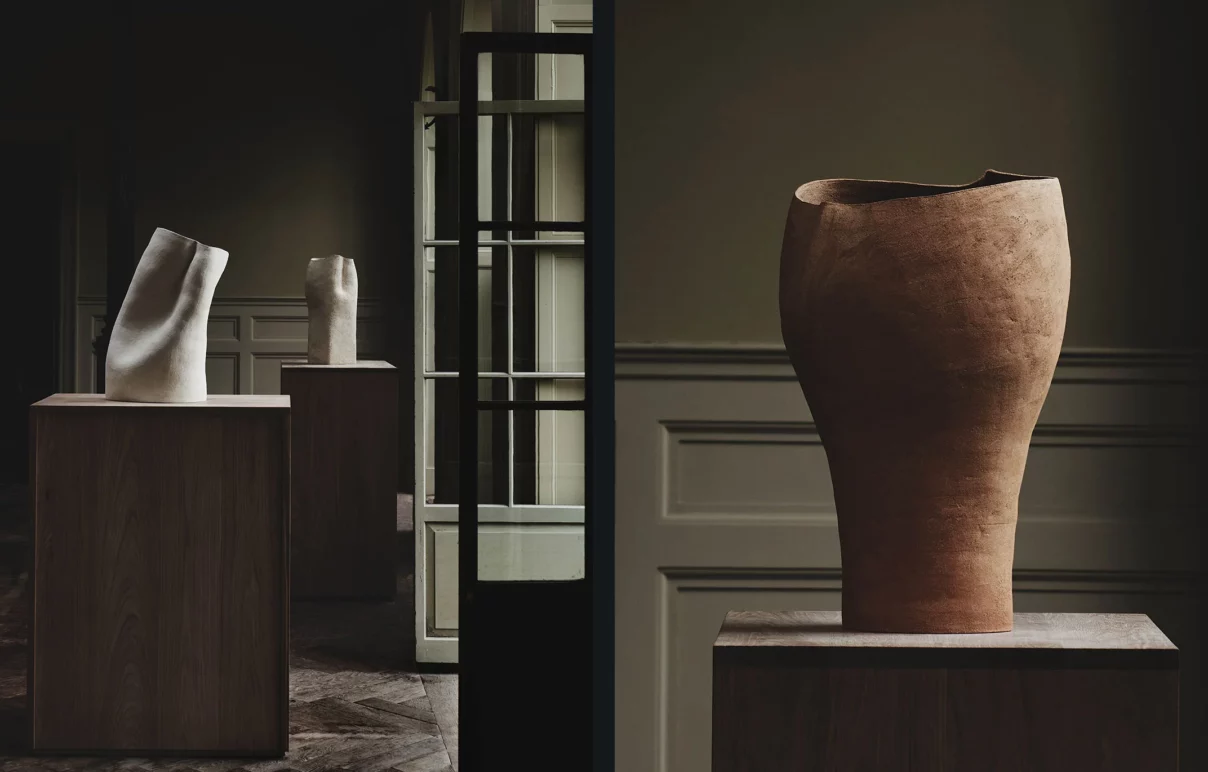
Pieces from Balkis’ “STASIS” solo show at Guild Gallery in New York City.
Image courtesy of: RW Guild
Ludmilla Balkis is a French ceramist that produces beautiful stoneware which is wood-fired in an ancient Japanese style kiln. Her unique pieces have a connection to Japanese pottery; not surprising since Balkis studied under the great tea master Rizu Takahasi. Takahasi is a Japanese artist proficient in the art… he has kilns in two Japanese cities and he built an anagram kiln to use in France.
Balkis studied fashion and art history at Studio Bercot in Paris; upon graduation, she was a fashion designer at Celine in London for many years. The artist draws inspiration from Lucie Rie, Jennifer Lee, and Hans Cooper; however, the Japanese aesthetic remains ever-present.
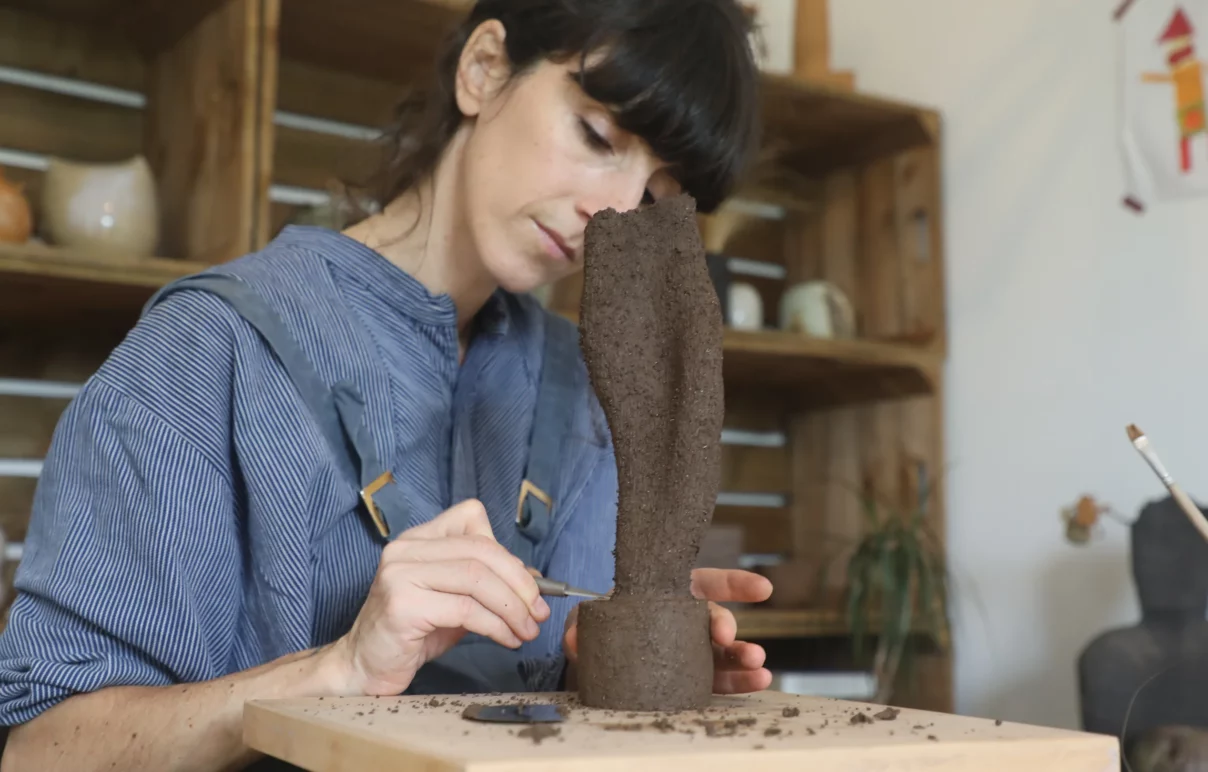
Balkis at work on a piece.
Image courtesy of: RW Guild
Relocating to the French Basque countryside allowed Balkis to pursue ceramics in a different way… however, she remains committed to (courtesy of an article in Surface Magazine by Ryan Waddoups) “those same principles [that] inform poetic vessels that seemingly capture moments frozen in time, embody an unflinching pursuit of equilibrium, and reflect an appreciation of clay in a raw, untouched state.”
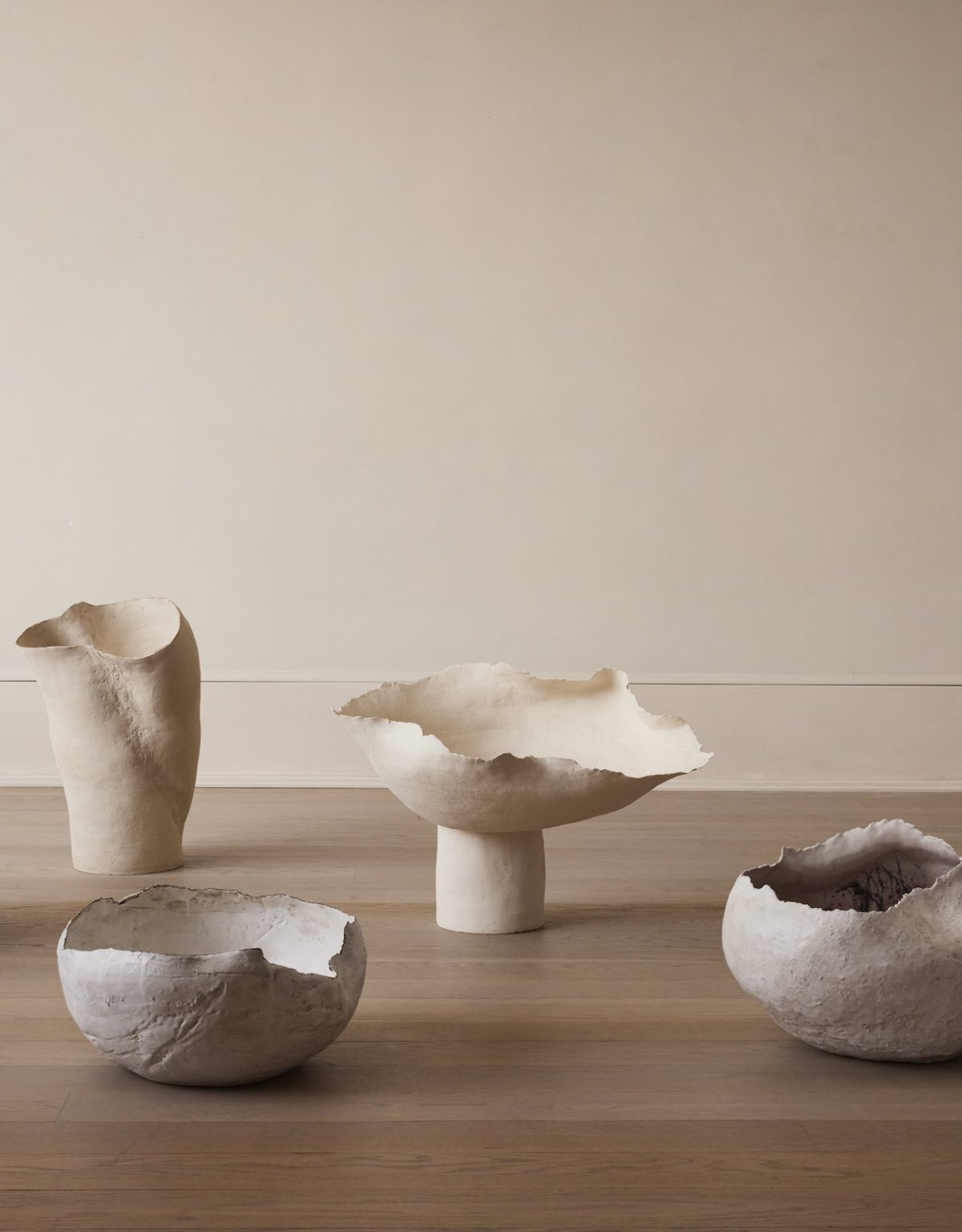
Balkis finds that by incorporating geological materials into her work, she is able to better connect with the soil that surrounds her.
Image courtesy of: Yin Ji Space
The southwest region of France allowed Balkis to garner inspiration from the area’s natural beauty. She was able to meld the techniques she learned from the Japanese art form into her work by formulating her own “wabi-sabi” aesthetic.
Balkis’ irregular and seemingly uncomplicated pieces took on new life in her first solo show, “STATIS,” at Guild Gallery in New York City. In the series, the artist sought to explore the idea of static motion. Balkis “collected materials in nature like twigs, stones, sand, and tree bark;” she then added them either to the original clay or used them as unique tools to created textures.
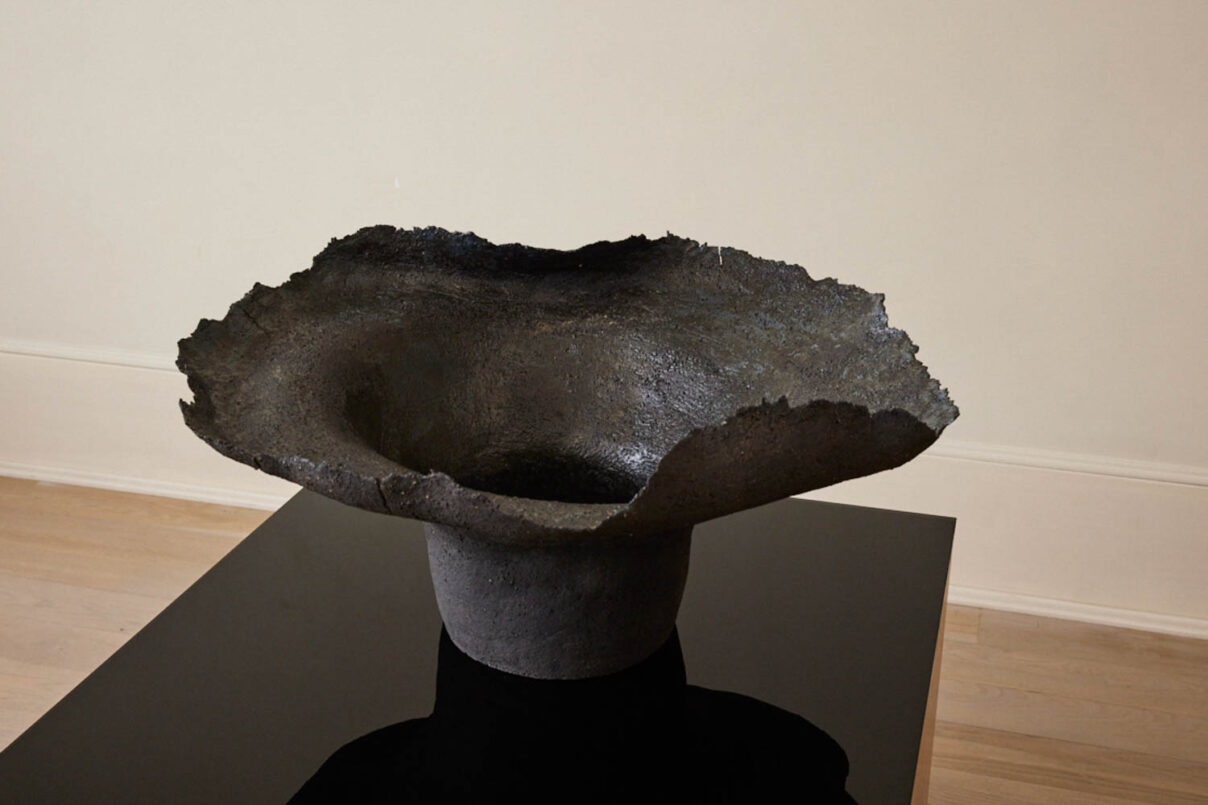
“Anima,” made from black-sanded stoneware.
Image courtesy of: Guild Gallery, photographed by Colin King (as featured in Interior Design)
Wood-firing gives Balkis’ pieces a unique look; she uses an anagram kiln which forces the clay to fully interact with the ashes, embers, and flames. These exchanges give the clay its particular texture and coloring. Balkis also uses different colors of clay… all found naturally, though foreign in Basque country.
The vessels that were part of the “STASIS” exhibition embody, says Balkis, “a state of equilibrium. That which exists in the intimate microcosm between the clay and I. And between my thoughts and my environments at large. Nature.”
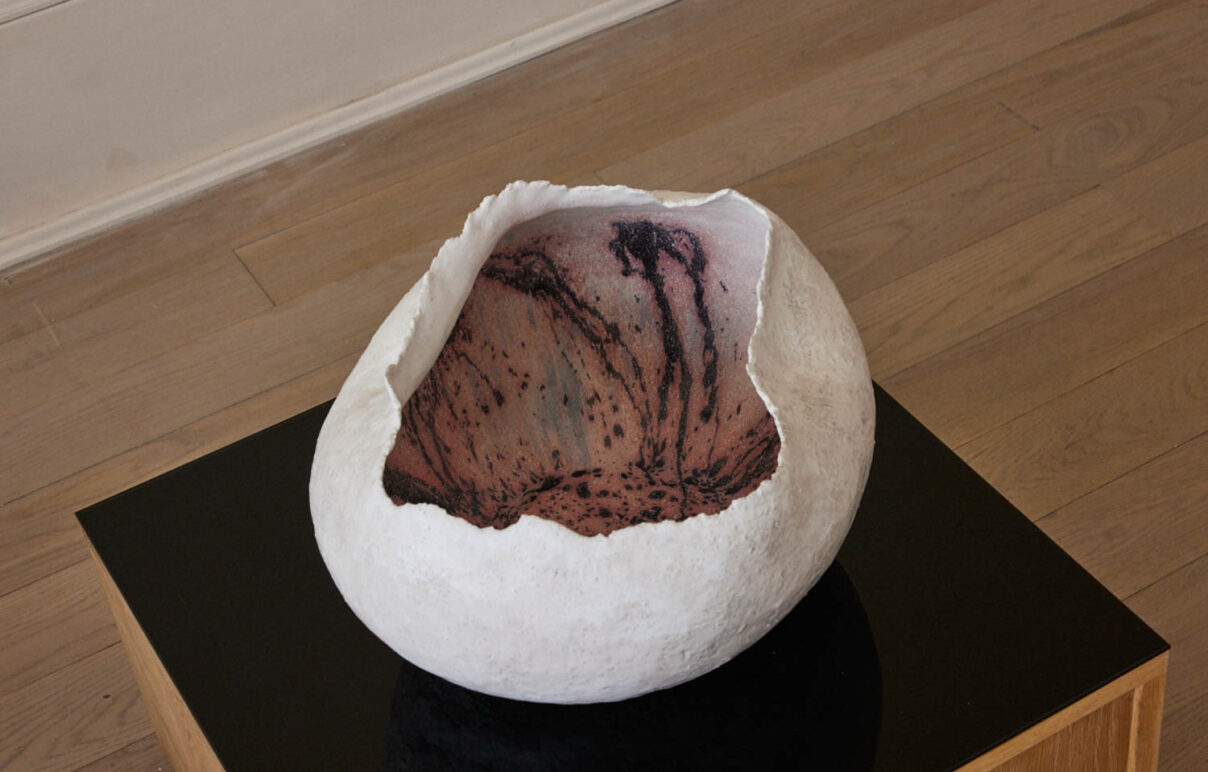
“Ilagria,” made from white-sanded stoneware with a white matte glaze, a black glaze is partially applied to the interior.
Image courtesy of: Guild Gallery, photographed by: Colin King (as featured by Interior Design)
Stoneware is what all of Balkis’ vessels have in common… however, some pieces include iron stain, iron oxide, wood ash slip, and other materials. The ceramicist allows the clay to dictate the shape the pieces take. Once a path is indicated, Balkis blow-oxides the dry piece to see if it needs another layer of slip or other wood ash.
Balkis’ palette is quite simple, minimalistic, and organic; this is so that the vessel might appear pseudo-invisible within nature… almost as though it belongs “in nature.” Balkis says (courtesy of an article featured in Interior Design and written by Osman Can Yerebakan) “I started to observe the shape of things in my everyday life as I moved closer to nature and by mimicking some shapes or textures.” No doubt, she succeeded!
To conclude, a quote that sums up Balkis’ work beautifully (courtesy os Yin Ji Space) “The history of clay is so ancient- it made me aware of living in connection with the environment and human history.”